|
Moth identification is
a challenge to most of us. With so many species, relatively few
references, and limited space in printed references, coming up empty in
an identification attempt is to be expected often. If the difficulty in
identifying native moths isn't bad enough, the specter of introduced
species, likely candidates to be left out of printed references, makes
things even more challenging. This page attempts to bring together the
exotic moths of eastern Sources:
|
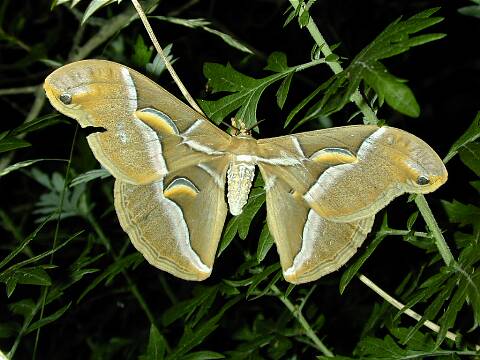 |
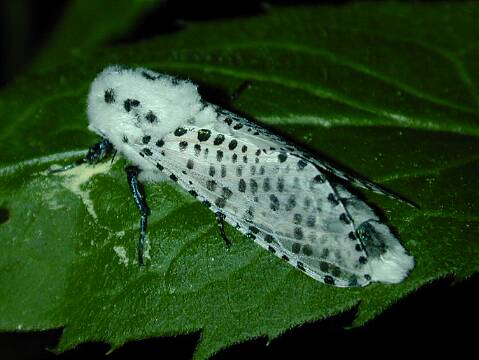 |
| Ailanthus Silkmoth 7/18/01 Queens co. NY © Steve Walter | Leopard Moth 7/5/03 Litchfield co. CT © Steve Walter |
Zeuzera pyrina, the
Leopard Moth, is a member of the carpenterworm family Cossidae
(technically, micro moths) (and not to
be confused with the native Giant Leopard Moth of the Arctidae). It was
introduced from Lymantria dispar, the
infamous Gypsy Moth, was deliberately introduced from Europe at |
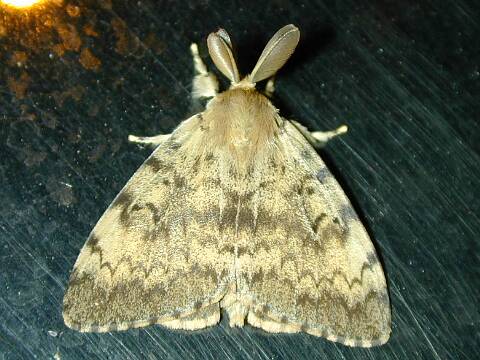 |
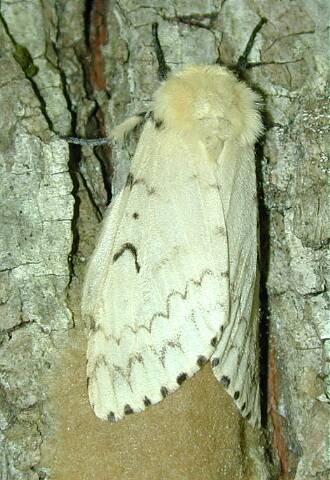 |
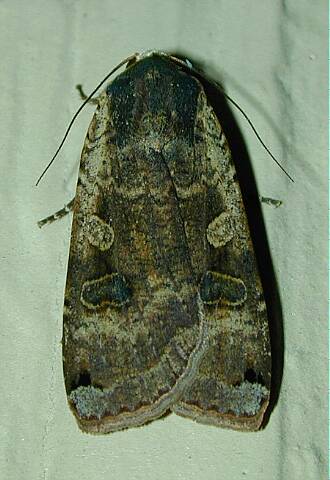 |
| Gypsy Moth, male, 7/12/00 Queens co. NY © Steve Walter | Gypsy Moth, female, 7/22/01 Westchester co. NY © Steve Walter | Large Yellow Underwing 6/23/03 Kings co. NY © Steve Walter |
|
|
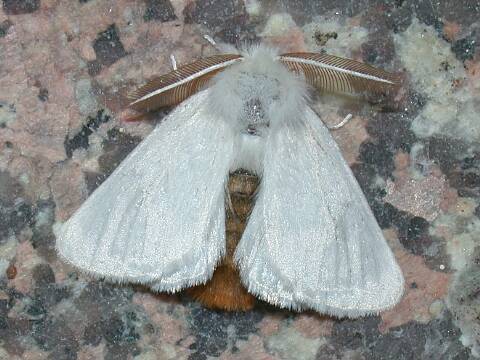 |
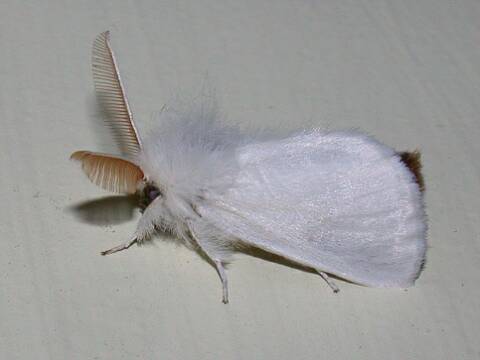 |
| Browntail Moth 7/17/03 Castine, ME © Hugh McGuinness | Browntail Moth 7/19/03 Castine, ME © Hugh McGuinness |
|
Noctua pronuba, the U.K.’s Large
Yellow Underwing, has become common and well known. The first known
Connecticut record was taken by Jon Truern-Trend in
Tolland County 21 August 1993. The fore wing pattern and color of
this moth is highly variable, as seen in the photos above and below,
but its size and shape make it easy to recognize. |
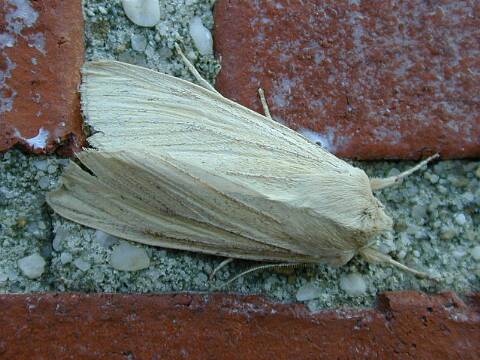 |
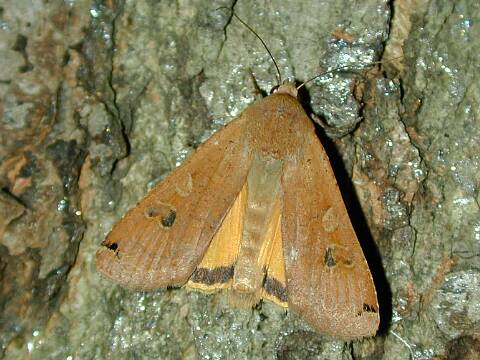 |
| Large Wainscot 11/9/02 Kings co. NY © Steve Walter | Large Yellow Underwing 8/8/01 Queens co. NY © Steve Walter |
Anomis commoda, which
I’ll call Ruddy Scallop Moth for now, was reported by Forbes to occur in
There is some speculation that Scoliopteryx libatrix, or The Herald, is
introduced. |
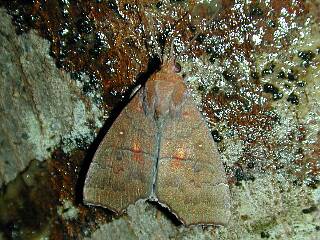 |
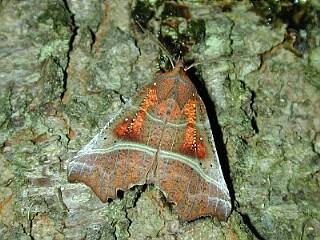 |
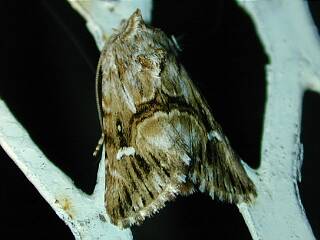 |
| Ruddy Scallop Moth 7/11/02 Nassau co. NY © Steve Walter | The Herald 8/26/03 Kings co. NY © Steve Walter | Toadflax Brocade 7/18/03 Westchester co. NY © Steve Walter |
|
Chloroclystis rectangulata, or Green Pug, was first collected in Nova Scotia in 1970 and
is now established throughout southeastern Canada and the Northeast, and
is spreading rapidly westward and southward (Wagner, 2001). Idaea dimidiata,
called Dotted Wave or Single-dotted Wave, is a European species now
established in the
|
 |
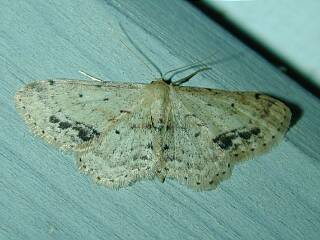 |
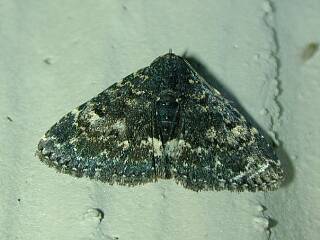 |
| Green Pug 6/10/02 Queens co. NY © Steve Walter | Dotted Wave 6/24/02 Nassau co. NY © Steve Walter | Waved Black 6/23/03 Kings co. NY © Steve Walter |
|
Parascotia fuliginaria,
called the Waved Black in the The two species below are the latest to be discovered in North America. Oligia latruncula, called Tawny Marbled Minor in the U.K., has been found by Steve Walter to be common on western Long Island. Several individuals a night may be seen at the peak of its flight in June. To date, it has not been reported elsewhere. Niphonyx segregata is apparently an Asian species. It was found by Steve Walter twice in Queens County, N.Y. in 2001 and once in 2002 to the north of New York City in Westchester County. It is now reported by Dale Schweitzer to be a common summer species at bait in northern Delaware and Cumberland County in southern New Jersey.
|
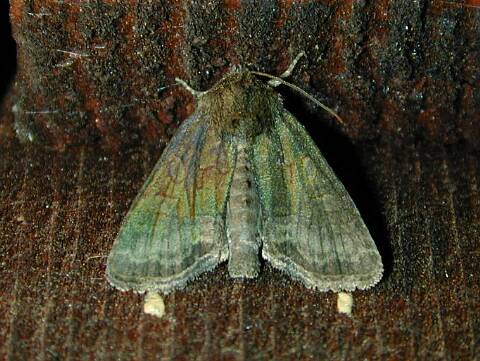 |
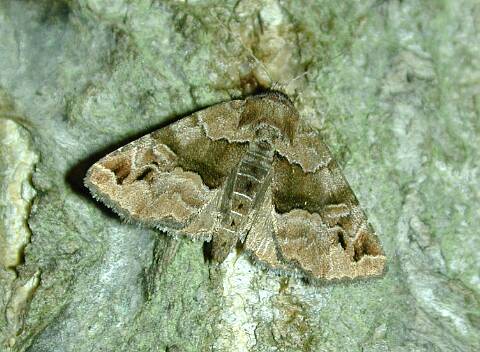 |
| Tawny Marbled Minor 6/11/02 Nassau co. NY © Steve Walter | Niphonyx segregata, 6/28/01 Queens co. NY © Steve Walter |